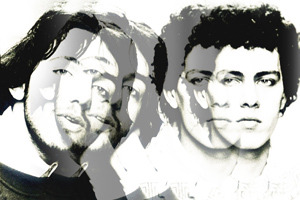
© Gordon Parks, 1942, American Gothic
“It’s the first professional image I ever made,” Parks says, “created on my first day in Washington.” Roy Stryker, who led the FSA’s very best documentary photographers—Dorothea Lange, Walker Evans, Carl Mydans, etc.—told Parks to go out and get acquainted with the city. Parks was amazed by the amount of bigotry and discrimination he encountered on his very first day.
“White restaurants made me enter through the back door, white theaters wouldn’t even let me in the door, and as the day went on things just went from bad to worse.” Stryker told Parks to go talk with some older black people who had lived their entire lives in Washington and see how they had coped. “That’s how I met Ella,” Parks explains (see a video interview with Parks talking about this day here).
Ella Watson was a black charwoman who mopped floors in the FSA building. Parks asked her about her life, which she divulged as having been full of misery, bigotry and despair. Parks’s simple question, “Would you let me photograph you?” and Ella’s affirmative response, led to the photographer’s most recognizable image of all time. (find other pictures of Ella Watson here and here).
“Two days later Stryker saw the image and told me I’d gotten the right idea but was going to get all the FSA photographers fired, that my image of Ella was ‘an indictment of America.’ I thought the image had been killed but one day there it was, on the front page of The Washington Post.” At the time, Parks couldn’t have realized that the image would go on to become the symbol of the pre-civil rights era’s treatment of minorities. (+)
The picture is a parody of Grant Wood’s painting “American Gothic
The models who were used in “American Gothic” standing by Grant Wood’s painting.
vito reblogged this from burnedshoes
wrolandhamilton liked this
allimba liked this
michaelbenezra reblogged this from caille
michaelbenezra liked this
 ydurude reblogged this from caille
ydurude reblogged this from caille randomberlinchick liked this
magnax23 liked this
redattn liked this
zakubabbles liked this
thisgameisaplateaux liked this
mel-men liked this
susanah-lor reblogged this from caille
susanah-lor liked this
hdlr reblogged this from burnedshoes
tyme1this-blog liked this
closeyoureyesthereisnogravity liked this
all-was-well607 reblogged this from caille
residentrogers reblogged this from caille
 morganwolfe reblogged this from caille
morganwolfe reblogged this from caille littlesunchinestar reblogged this from burnedshoes
whatsername13 liked this
dressthesavage liked this
 thesoundofswedishmelancholy reblogged this from caille
thesoundofswedishmelancholy reblogged this from caille artcritiqued reblogged this from caille
ngocvnguyen liked this
sherwin-rulz reblogged this from caille
 jaigeyes-trampstamp liked this
jaigeyes-trampstamp liked this museumsandstuff liked this
thisisimp0ssible liked this
tetraghost reblogged this from trickytalks
tetraghost liked this
trickytalks reblogged this from caille
trickytalks liked this
amethystcrown reblogged this from caille
caille posted this
- Show more notes
